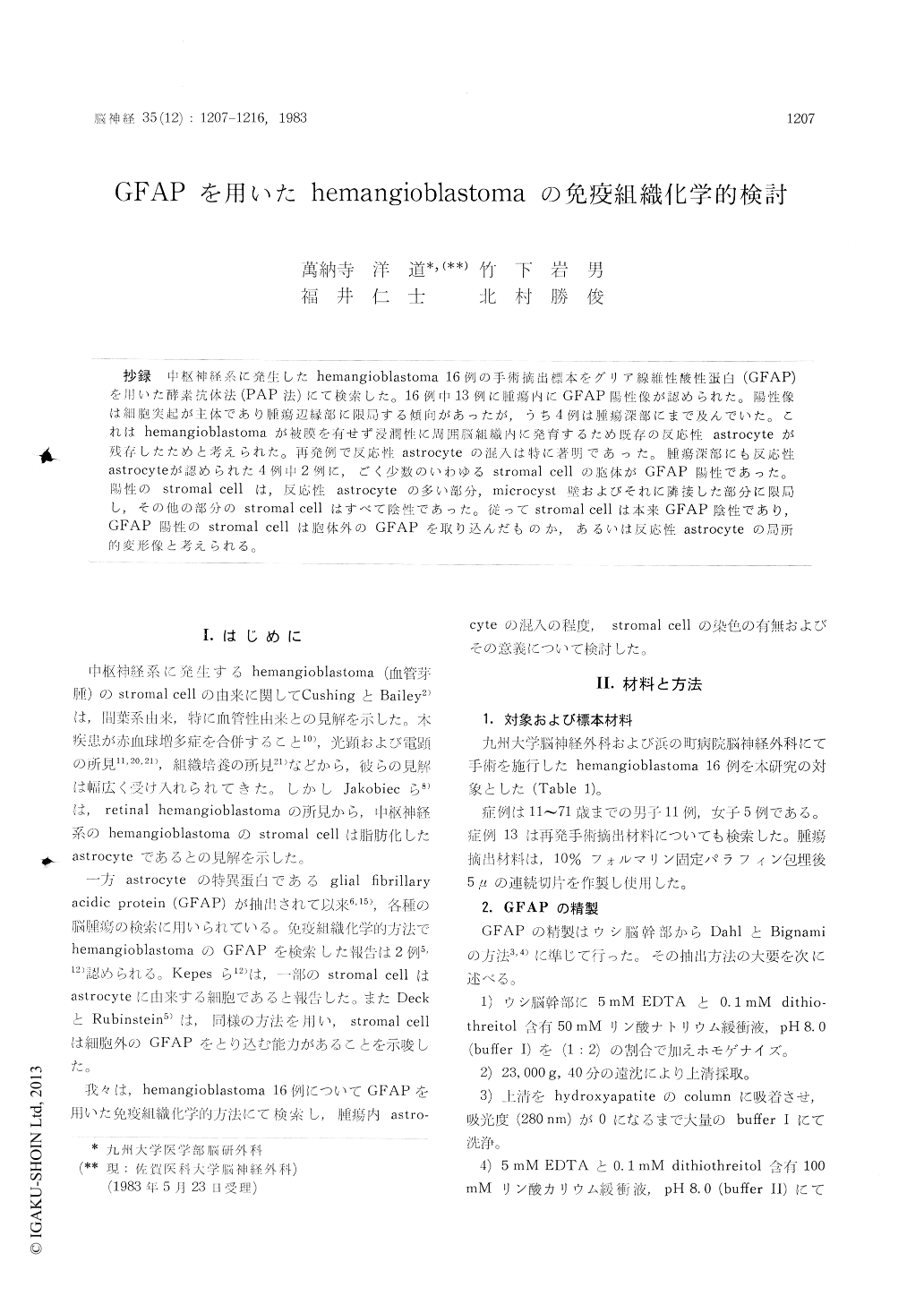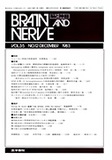Japanese
English
- 有料閲覧
- Abstract 文献概要
- 1ページ目 Look Inside
抄録 中枢神経系に発生したhemangioblastoma 16例の手術摘出標本をグリア線維性酸性蛋白(GFAP)を用いた酵素抗体法(PAP法)にて検索した。16例中13例に腫瘍内にGFAP陽性像が認められた。陽性像は細胞突起が主体であり腫瘍辺縁部に限局する傾向があったが,うち4例は腫瘍深部にまで及んでいた。これはhemangioblastomaが被膜を有せず浸潤性に周囲脳組織内に発育するため既存の反応性astrocyteが残存したためと考えられた。再発例で反応性astrocyteの混入は特に著明であった。腫瘍深部にも反応性astrocyteが認められた4例中2例に,ごく少数のいわゆるstromal cellの胞体がGFAP陽性であった。陽性のstromal cellは,反応性astrocyteの多い部分,microcyst壁およびそれに隣接した部分に限局し,その他の部分のstromal cellはすべて陰性であった。従ってstromal cellは本来GFAP陰性であり,GFAP陽性のstromal cellは胞体外のGFAPを取り込んだものか,あるいは反応性astrocyteの局所的変形像と考えられる。
Sixteen cases of CNS hemangioblastoma were examined for glial fibrillary acidic protein (GFAP) using the immunoperoxidase method. In 13 cases GFAP-positive cells were found in the tumor. In all positive cases reactive gliosis in the form of trapped reactive astrocytes and their cytoplasmic processes penetrated the margin of the tumor. In 4 of the positive cases GFAP-positive cells were present deep in the tumor. Aggregates of GFAP-positive cells and fibrils were especially prominent in a recurrent case. Because hemangioblastomas grow without capsule into the cerebellar tissue, it is considered that reactive astrocytes and their fibrils are easily included and trapped within the tumor.
In two cases GFAP-positive plump stromal cells, which were definitely different from the reactiveastrocytes, were seen. They were neighbored with the dense gliotic foci or on and around the micro-cyst wall. This may be interpreted as that the stromal cells have a capacity to incorporate theextracellular GFAP derived from the intratumoral gliotic foci or cysts.

Copyright © 1983, Igaku-Shoin Ltd. All rights reserved.


